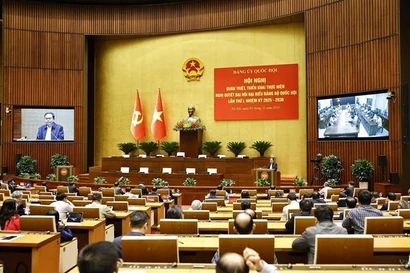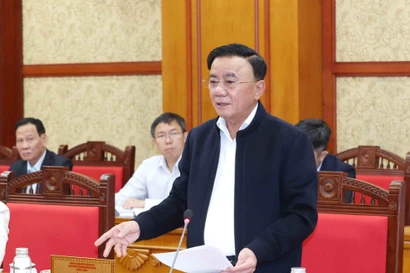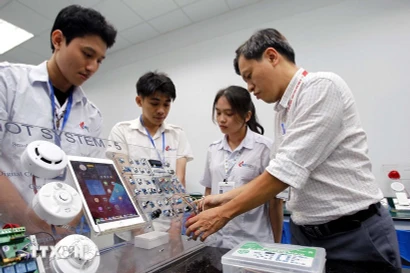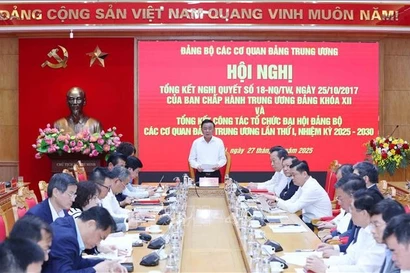
Dong Nai (VNA) – The southern province of Dong Nai is accelerating its shift from a growth model reliant on cheap labour and natural resources to one driven by science, technology, and innovation - a move seen as a key driver of both local and national economic expansion.
Digital economy emerging as growth engine
Commenting on draft documents for the 14th National Party Congress and the provincial Party Congress, Dean of the Institute of Business Research at the University of Economics Ho Chi Minh City Prof. Dr. Vo Xuan Vinh said the Politburo’s Resolution on breakthroughs in science, technology, innovation, and national digital transformation provides a strategic framework to boost productivity and support long-term, sustainable growth.
Combining scientific research and technological applications with policies backing corporate innovation will drive economic expansion and elevate Vietnam’s position in global value chains, gradually narrowing the gap with advanced economies, Vinh said.
He cited forecasts showing Vietnam’s digital economy could reach 45-50 billion USD by 2025 and expand to 90-200 billion USD by 2030, highlighting substantial growth potential. “To realise these targets, Vietnam is rolling out a series of breakthrough macroeconomic policies,” he said. “Administrative streamlining effective July 1, 2025, alongside major resolutions on science, technology, digitalisation and private sector development, is delivering strategic momentum for sustainable growth. Institutional reforms, an improved investment climate and greater policy transparency continue to provide a stable development foundation for businesses and investors”.
For Dong Nai, Vinh noted the province’s open investment environment, flexible governance mechanisms and the principle of “localities decide, act and take responsibility” are generating strong momentum for development from its existing advantages and internal strengths.
Looking ahead, Dong Nai targets expansion of digital and high-tech industries, attracting investment in semiconductors, electronic components, artificial intelligence (AI) and automation to increase value creation in production chains. Global supply chain shifts amid US - China trade tensions also offer opportunities to lure multinational groups.
Hi-tech agriculture will continue receiving policy support to boost exports to major markets such as the US, EU and China. The Government’s southeast regional development plan is expected to develop local infrastructure and investment appeal, solidifying its role as a key regional growth hub and driver of global integration.
Innovation, digital transformation at the core
According to Director of the provincial Department of Science and Technology Pham Van Trinh, the province has made strides in science, technology, and digital transformation in recent years. For the 2025–2030 period, Dong Nai will act to attract leading global technology firms and research organisations to invest in its digital technology and hi-tech parks, science and innovation zones.
“One of our key goals is to attract at least one top-tier global enterprise or organisation by 2030,” Trinh said. “At the same time, Dong Nai will boost cooperation in research and technology transfer with technologically advanced nations, especially in strategic industries such as semiconductors, data centres, AI, Internet of Things (IoT), big data, cloud, and blockchain. The province will also step up support for domestic enterprises investing in research and development, and technology upgrades”.
To meet these goals, Dong Nai plans to build a comprehensive innovation ecosystem connecting various stakeholders. It will establish technology incubators, innovative startup centres, and venture capital funds to finance innovative startup projects from concept to commercialisation.
Trinh stressed the growing importance of data industries and data economy. With its strategic location and developing infrastructure, Dong Nai has the potential to become a regional digital hub akin to Singapore or Hong Kong (China), he added.
The provincial Department of Science and Technology aims for the digital economy to account for at least 30% of GRDP by 2030, making it a central driver of the province’s exceptional growth trajectory./.



















